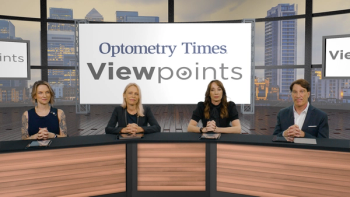
ARVO 2024: Investigators detail correlation between visual markers and neurological deficits in mouse model of MS
The investigators induced experimental autoimmune encephalomyelitis in 15 female mice by immunizing them with myelin oligodendrocyte glycoprotein 33-55 in complete Freund’s adjuvant and pertussis toxin.
Investigators who developed an experimental murine model of autoimmune encephalomyelitis found a significant correlation between visual function and structure and overall motor-sensory impairment, according to Oliver W. Gramlich, PhD, who presented the findings of his research team at the Association for Research in Vision and Ophthalmology annual meeting in Seattle. He is from the Department of Ophthalmology, University of Iowa Hospitals and Clinics, and the Iowa City VA Medical Center, Iowa City, IA.
The first symptom in from one quarter to almost half of patients with multiple sclerosis (MS) is acute optic neuritis. With progression of MS, thinning of the retinal ganglion cell (RGC) complex is seen as well as a decrease in the amplitude of the pattern electroretinogram (pERG).
Study methods
In this study, Gramlich and colleagues wanted to determine if changes in the visual system were correlated with motor-sensory deficits in this experimental autoimmune encephalomyelitis (EAE) model.
The investigators induced EAE in 15 female C57BL/6J mice by immunizing the animals with myelin oligodendrocyte glycoprotein 33-55 in complete Freund’s adjuvant and pertussis toxin. The motor-sensory impairment in the mice was quantified using a 5-point EAE scoring scheme. The investigators assessed the pERG and the thickness of the RGC/inner plexiform layer (IPL) complex and the optic nerve histopathology after induction. The data obtained were compared to those from 15 age-matched control mice.
Results
The pERG amplitude also decreased significantly (p=0.0001) in the treated animals compared with the controls, ie, 16.2±0.84 µV compared with 23.8±0.7 µV, respectively.
Other significant correlations also were seen between the pERG amplitude and the mean EAE score (r=-0.74; p=0.002) and the cumulative EAE score (r=-0.74; p=0.002).
Analysis of the OCT images showed a significant correlation between thinning of the RGC/IPL complex and both the cumulative EAE score (r=-0.90; p<0.0001) and the pERG amplitude (r=0.49; p=0.0091).
The investigators also reported that optic nerve histopathology showed significant correlations between demyelination and the cumulative EAE score (r=0.71; p=0.004), pERG amplitude (r=-0.41; p=0.04), and RGC/IPL complex thickness (r=-0.58; p=0.0029), and between immune cell infiltration and cumulative EAE score (r=0.83; p=0.0002), pERG amplitude (r=-0.46; p=0.017), and RGC/IPL complex thickness (r=-0.72; p<0.0001) in EAE mice.
Gramlich and colleagues concluded, “Our data demonstrated a significant correlation between visual function and structure and overall motor-sensory impairment in EAE animals. Translation of these data to clinical application would be useful to assess the central nervous system function in patients with MS in a rapid, non-invasive, and cost-effective manner. Standardizing parameters could lead to a more rapid and robust model for testing new therapeutic approaches for mitigating MS-related optic neuritis.”
Reference:
Gramlich OW, Elwood BW, Anders J, et al. Correlation between visual biomarkers and motor-sensory deficits in a model of multiple sclerosis. Poster presented at: Association for Research in Vision and Ophthalmology annual meeting; May 5-9, 2024, Seattle, WA. Poster number: A0299
Newsletter
Want more insights like this? Subscribe to Optometry Times and get clinical pearls and practice tips delivered straight to your inbox.












































.png)


